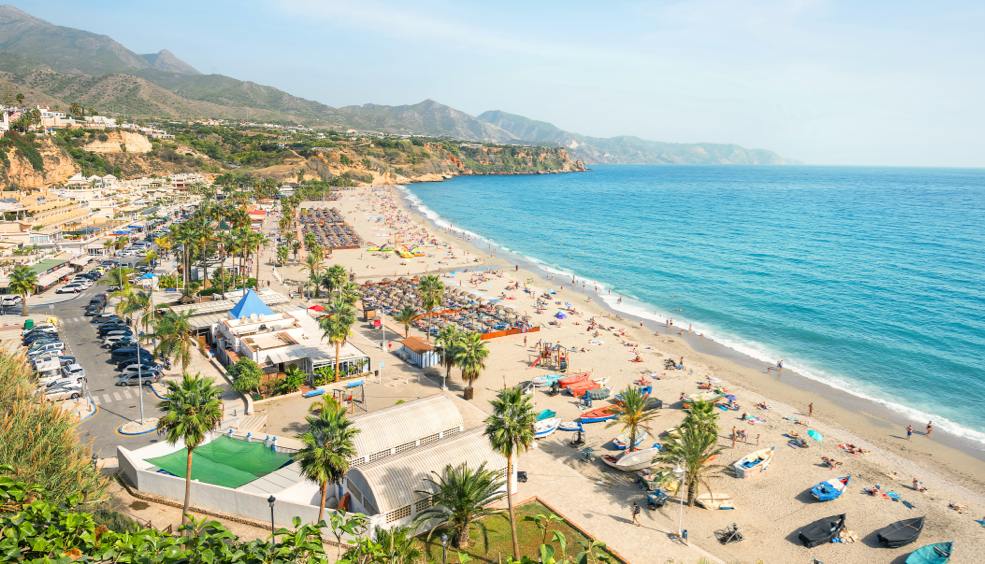Oviedo in Four Restaurants Aside From Fabada
Food is always good in Asturias, but you need to know which restaurants to choose. It’s best to avoid expensive ones and go for those with hearty fare. Better still, those offering something different, entertaining, mouth-watering, with more gastronomic intent… In short, venues resembling the ones we visited in Oviedo. Oh, and don’t look for fabada here, because you can find it everywhere. Here, we’re after something else.
180° C
Located on Calle Jovellanos, at one end of Calle Gascona, known as the “cider boulevard” for the numerous cider halls lining the street. 180° C is a no-frills gastrobar headed by chef Edgar de Miguel,who learned the trade from Martín Berasategui, Carme Ruscalleda and Pedro Subijana, among others. The restaurant has a bar counter with dishes of shared tapas for an average of 12 euros, and a dining room serving traditional, local cuisine based on modern techniques and humble produce, for around 30 euros. There is also the odd international dish, like the amusing, in no way sour red pomfret ceviche(lemon-and-garlic marinade) with passion fruit and corn cream, round bites like the brioche de bocartes with avocado pear and tomato, and such noble dishes as tender codfish candied over a low fire with a salad of broad beans, dried tomato and homemade kefir. They offer three working-day lunch menus for 12.50, 16.50 and 19 euros.
De Labra
Two hurdles need to be overcome in order to enjoy your meal to the full here. One is physical, as the restaurant lies 3.5 kilometres from the centre of Oviedo, which translates to a half-an-hour’s walk or a taxi ride. The other is psychological, as the restaurant is wont to arrange banquets and, for some unknown reason, for many this generates misgivings. Well, no – De Labra is well worth the visit because their cuisine is sensational and their prices amazing compared to any big city. The best example is their in-season menu, featuring three aperitifs and four dishes – this costs 25 euros without drinks, and 33 with pairings. They are equally adept at crafting traditional dishes with modern methods and presentations as producing Japanese cuisine, as they have a teppanyaki griddle. It was the first restaurant in north-east Spain to serve Japanese cuisine and have been doing so for 12 years now. Average price – 35 euros. They have four menus – an executive lunch menu on working days for 17.95 euros, an in-season menu (three aperitifs and four dishes for 25 euros, or 33 euros if you include four wines), a tasting menu (six dishes for 42 euros; 55 euros including six wines), and Japanese (7 dishes for 45 euros, excluding drinks).
Naguar
Naguar means “to make your mouth water” in Bable (Asturian). The name couldn’t be more appropriate for a restaurant serving modern Asturian cuisine. “Flavour and roots”, proclaims their chef, Pedro Martino, by way of a motto describing his work over the fire. If his dishes stand out for anything it is their intensity, potency, strength, simple elegance and complete lack of aggressiveness. Try the spicy tripe and bone marrow gravy, the creamy clam and jig-caught squid rice and/or the llámpares (limpets) in their juice and your mouth will water until you say – enough! Martino won the 2013 Spanish Pinchoscompetition with a chickpea stew coulant which is eaten in one go. He was also awarded a Michelin star from 2003 to 2009 for L’Alezna, in Oviedo, so he’s guaranteed to make you “naguar”. Average price – 40 euros (there is a tasting menu for 35 euros and another for 55, both excluding drinks).
Mestura
There is always a moment for indulging in some gastronomic tribute on any trip. The Restaurante Mestura, housed in the Gran Hotel España, is ideal for this (and it’s not very pricey either). Noteworthy for its setting, their stately service and the chef, Javier Loya’s elegant culinary offerings (he earned a Michelin star for the Real Balneario de Salinas). This is Asturian cooking with a refined flourish, with just the right (masterly) technique in the service of upscale products. Peerless dishes like the charcoaled monkfish with lemon thyme and Jerusalem artichoke, and squid tartare with rhubarb salad, snow peas and tarragon broth. Average price – 35 to 45 euros. There is an executive lunchtime menu from Tuesday to Friday for 21.80 euros, the Foment Asturian cuisine menu (aperitif, two starters, main course and dessert, without drinks) for 39, and a tasting menu for 60 euros sans drinks.
Book your Vueling to Oviedo – you will delight in these culinary gems.
Text and photos: Ferran Imedio of Gastronomistas.com
more info
New routes from London to Spain with Vueling
Gatwick Airport now has direct flights to Malaga (Costa del Sol, Andalusia), Seville (Andalusia), Granada (Andalusia), Almería (Andalusia), Cádiz (Jerez, Andalusia), Menorca (Balearic Islands), Oviedo (Asturias) and A Coruña (Galicia).
more info10 reasons not to miss Asturias
The sea, nature, fishing villages, cities full of monuments, nightlife, valleys and mountains. There are so many reasons to visit Asturias that we have struggled to pick just ten.
more infoThe best national parks in Europe
Europe is home to a constellation of spectacular national parks, some of them UNESCO world heritage sites. Grab your boots, we're leaving!
more info




